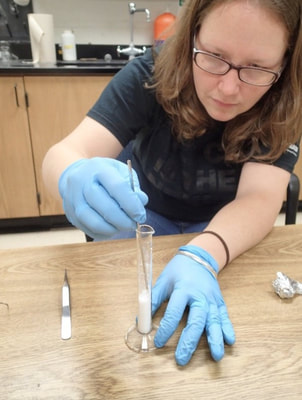|
Insecticide resistance can result in product failures and pest infestations getting out of control. Does that mean all hope is lost? How can people stop insecticide resistance from happening? This week’s blog provides a little knowledge about the traits that allow insects to survive exposure to an insecticide and ways we can prevent this phenomenon from occurring. Scientists group insecticides into classes based on different commonalities they share, such as the way they kill bugs (e.g., their mode of action). For example, the class of insecticides called organophosphates (OPs) all work by interfering with an enzyme involved in nerve function. By interfering with this enzyme, normal nerve signals fail, the insect’s behavior changes, and ultimately, the insect dies. The enzyme affected by the OP is called the target site. The target site is the exact place where the pesticide exerts its killing action. How is all of this related to insecticide resistance, though? When people repeatedly use products with the same mode of action, resistance can develop. In groups of bugs, a variety of individuals exist with unique physical and behavioral characteristics—and some of them may have genetically based traits that make them less likely to die from pesticide exposure. Using a pesticide kills the majority of individuals in the population. With enough time, the repeated use of the same or similar pesticides kills the susceptible members of the population until only the individuals that can survive exposure remain. WHAT KIND OF TRAITS ALLOW AN INSECT TO SURVIVE EXPSOURE TO AN INSECTICIDE? Scientists have identified relatively few ways that insects use to survive exposure to an insecticide.
Another strategy uses a product that has two different modes of action (combination product), or a tank-mix. By using multiple modes of action at once, hopefully there will not be individuals in the population with the right mechanism(s) of resistance to overcome simultaneous killing methods. However, over long periods of time, this method may still select for insecticide resistance. For more information on tank mixing, visit the Pesticide Environmental Stewardship website. Maintaining susceptible individuals with susceptible genes that can interbreed with resistant individuals may also delay resistance. In agriculture, pest managers may do this by not spraying dedicated areas within or near fields to create safe spaces or refuges for susceptible insects. However, in some environments like people’s homes, allowing any insects to persist may not be acceptable. FINAL THOUGHTS Evolution is a process that allows animals to survive, even in changing environments. Thus, we should not be surprised that insects can adapt to environments where insecticides are applied. As of now, over 500 species of insects demonstrate some form of insecticide resistance. Once a population has become resistant, professionals have a challenge lessening that resistance. Reversal of resistance can occur by allowing extensive time between applications of insecticides. However, this is not always reasonable, and no one can know if a resistant population will revert back to the same level of susceptibility. The best way to stop resistance is preventing resistance. With a little bit of knowledge, everyone from consumers to professionals can help delay the selection of resistance.
0 Comments
Your comment will be posted after it is approved.
Leave a Reply. |
Bug Lessons BlogWelcome science communicators and bug nerds!
Interested in being a guest blogger?
Archives
November 2023
Categories
All
|

